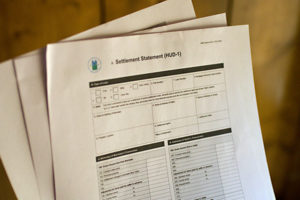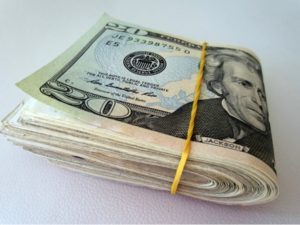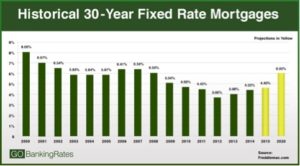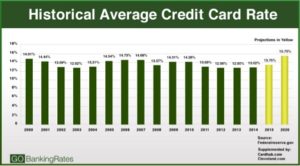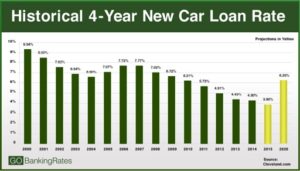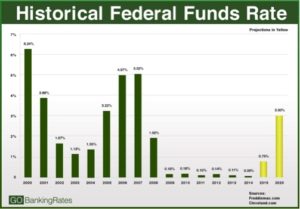SUNDAY, FEBRUARY 1, 2015
Iowa City – A Special Place
 Offering big-city amenities along with small-town hospitality, Iowa City has it all. Nestled in the heart of the Midwest in east central Iowa in Johnson County, it has long served as a locus for culture, education, variety and fun. A stroll through the downtown pedestrian plaza proves it. Here you will find a real sense of community and friendly commerce. Downtown you might come across college students in a game of chess on the plaza’s life-size game board. On-lookers sit on the plaza’s limestone benches talking politics, philosophy, or Big Ten sports while children climb a nearby jungle gym. A block away, others might be taking a class at the senior center, lounging in outdoor cafés, savoring the fine cuisine the city has to offer. Across the way, you’ll likely hear a local band playing a catchy mix of jazz and blues on the area’s outdoor mini stage. The state’s historic Old Capitol Building looms to the west. A cherished landmark of the University of Iowa campus, it embodies the city’s prominence, grace, and heritage. Whether a first-time visitor or a native returning home, you will discover this place is one where tradition comfortably exists alongside change.
Offering big-city amenities along with small-town hospitality, Iowa City has it all. Nestled in the heart of the Midwest in east central Iowa in Johnson County, it has long served as a locus for culture, education, variety and fun. A stroll through the downtown pedestrian plaza proves it. Here you will find a real sense of community and friendly commerce. Downtown you might come across college students in a game of chess on the plaza’s life-size game board. On-lookers sit on the plaza’s limestone benches talking politics, philosophy, or Big Ten sports while children climb a nearby jungle gym. A block away, others might be taking a class at the senior center, lounging in outdoor cafés, savoring the fine cuisine the city has to offer. Across the way, you’ll likely hear a local band playing a catchy mix of jazz and blues on the area’s outdoor mini stage. The state’s historic Old Capitol Building looms to the west. A cherished landmark of the University of Iowa campus, it embodies the city’s prominence, grace, and heritage. Whether a first-time visitor or a native returning home, you will discover this place is one where tradition comfortably exists alongside change.Events & Activities
 From music and art festivals to Broadway performances, Iowa City has an event to suit anyone’s taste. During the summer months, live music becomes a part of downtown’s irresistible ambiance. Each July, the city hosts a jazz festival that attracts music enthusiasts from both near and far. The annual Iowa Arts Festival features the state’s best visual art, music, and food. Iowa City is also home to several community theaters, including Riverside Theatre’s Shakespearean stage. Located in City Park, this open-air theater presents shows under the stars.
From music and art festivals to Broadway performances, Iowa City has an event to suit anyone’s taste. During the summer months, live music becomes a part of downtown’s irresistible ambiance. Each July, the city hosts a jazz festival that attracts music enthusiasts from both near and far. The annual Iowa Arts Festival features the state’s best visual art, music, and food. Iowa City is also home to several community theaters, including Riverside Theatre’s Shakespearean stage. Located in City Park, this open-air theater presents shows under the stars.
Iowa City is also home to the recently restored historic Englert Theatre downtown and also has a vibrant Iowa City Community Theatre.
If Broadway productions are more your style, the University of Iowa’s Hancher Auditorium showcases the best in entertainment. Over the years, Hancher has been host to productions such as Rent, Cats, Les Misérables, and Stomp. The Hancher stage is frequented by the likes of Yo Yo Ma, Jerry Seinfeld, and Wynton Marsalis.
Event Calendar:http://www.culturalcorridor.org
Home to the University of Iowa
 Founded in 1847, today’s University of Iowa is recognized as one of the nation’s top public universities, offering more than 100 areas of study for its 29,000 students. The institution’s Writers’ Workshop is internationally acclaimed, having fostered the creative talents of Ray Bradbury, Flannery O’Connor, Jane Smiley, and Kurt Vonnegut. The University also includes one of the largest university-owned teaching hospitals in the nation. Providing patient care within 16 medical specialties, the University of Iowa Hospitals and Clinics have been named one of “America’s Best Hospitals” by U.S. News & World Report magazine. Iowa City is also home to Mercy Hospital, a pre-eminent provider of healthcare to the region.
Founded in 1847, today’s University of Iowa is recognized as one of the nation’s top public universities, offering more than 100 areas of study for its 29,000 students. The institution’s Writers’ Workshop is internationally acclaimed, having fostered the creative talents of Ray Bradbury, Flannery O’Connor, Jane Smiley, and Kurt Vonnegut. The University also includes one of the largest university-owned teaching hospitals in the nation. Providing patient care within 16 medical specialties, the University of Iowa Hospitals and Clinics have been named one of “America’s Best Hospitals” by U.S. News & World Report magazine. Iowa City is also home to Mercy Hospital, a pre-eminent provider of healthcare to the region.
In addition to academics, UI students are able to choose from a wide variety of activities. From intramural sports teams to drama clubs, the University of Iowa has more than 350 student organizations. And, the University’s athletic calendar is always full of the home games, meets, and matches of its 22 Big Ten teams.
Scenic Attractions
 Iowa City is proof that the state’s geography isn’t merely a flat and vast plain, but rather a place of rolling hills, lush and scattered woodlands, and tall grasses. In the Iowa City area alone, there are 41 public parks, several of which overlook the scenic Iowa River. Many of these parks are equipped with networks of walking and biking trails, and quaint picnic sites and prairie reserves.
Iowa City is proof that the state’s geography isn’t merely a flat and vast plain, but rather a place of rolling hills, lush and scattered woodlands, and tall grasses. In the Iowa City area alone, there are 41 public parks, several of which overlook the scenic Iowa River. Many of these parks are equipped with networks of walking and biking trails, and quaint picnic sites and prairie reserves.
The Coralville Reservoir, just 3½ miles north of Iowa City, offers a multitude of recreational activities. In addition to 5,000 acres of water for pleasure boating, fishing, swimming, and water-skiing, the area is laced with attractive hiking, biking, and cross-country skiing trails. Catch a glimpse of the state’s geologic past at a nearby Devonian Fossil Gorge. Unearthed during the flood of 1993, the gorge contains a variety of fossils more than 350 million years old.
Shopping and Dining Out
Iowa City is full of unique shops – from the Old Capitol Town Center, Pepperwood Plaza, and the Sycamore Mall, the area provides a variety of shopping opportunities. Downtown is unequalled when it comes to offering specialty goods; there you’ll find clothing and jewelry, gifts and toys, books and espresso. The Coral Ridge Mall, located in the nearby city of Coralville, provides other possibilities for the serious shopper.
When shopping, you’re sure to work up an appetite. What better place to dine out than Iowa City? Scattered throughout Iowa City, there are numerous cafés and restaurants that offer a variety of foods, from international dishes to home-style meals. Depending on the weather, you might decide to dine outside at one of downtown’s outdoor cafés.
For more info: http://www.downtowniowacity.com & http://www.iowacitycoralville.org
Iowa City: The Center of It All
 Culture and history abound in and around Iowa City. The Amana Colonies are just a 20-minute drive west of the city. The seven colonies offer the best in German home-style food and traditional crafts. The small town of Kalona lies southwest of Iowa City, offering visitors a glimpse into the culture of the Amish population that calls the area home. West Branch is located east of Iowa City and is the birthplace of Herbert Hoover, America’s 31st president. Visitors can learn more about the life and times of the president with a stop at the Herbert Hoover Presidential Library-Museum. Cedar Rapids, located 30 miles north of Iowa City along Interstate 380, proudly recognizes its heritage through the charm of its Czech Village and other cultural attractions.
Culture and history abound in and around Iowa City. The Amana Colonies are just a 20-minute drive west of the city. The seven colonies offer the best in German home-style food and traditional crafts. The small town of Kalona lies southwest of Iowa City, offering visitors a glimpse into the culture of the Amish population that calls the area home. West Branch is located east of Iowa City and is the birthplace of Herbert Hoover, America’s 31st president. Visitors can learn more about the life and times of the president with a stop at the Herbert Hoover Presidential Library-Museum. Cedar Rapids, located 30 miles north of Iowa City along Interstate 380, proudly recognizes its heritage through the charm of its Czech Village and other cultural attractions.Strong & Diverse Economy
Iowa City’s economy is as diverse as it is prosperous. The economy is based upon thriving commerce, a major university, and a number of national and international businesses, including several Fortune 500 companies. Iowa City is home to the corporate headquarters for ACT, Moore North America, Pearson, Lear, Oral B Laboratories/Gillette, Procter & Gamble, and scores of smaller industries and businesses.
The University of Iowa is the city’s largest employer, with 23,608 employees. The academic and research mission of the University, along with the health care services provided at its hospitals and clinics, have a tremendous economic impact on the area.
While established firms continue to prosper in Iowa City, opportunities abound for new businesses. The city has land for additional industrial/commercial development. These sites are well suited for offices, manufacturing, warehousing, and/or research facilities.
The City of Iowa City also has a variety of programs to assist with business development. Contact Wendy Ford, Economic Development Coordinator at (319) 356-5248.
Workforce & Training
Without question, Iowa City’s greatest asset is its people: well-educated and highly productive workers who demonstrate low absenteeism and turnover rates. The city’s university student population augments the labor force and provides a large pool of part-time workers for area businesses. In addition, the University continuously injects qualified professional and technical expertise into the labor market.
The Iowa City Kirkwood Community College campus has an enrollment of approximately 3,239 students and offers a full Arts and Sciences curriculum. The main campus of Kirkwood Community College is located approximately 20 miles away in Cedar Rapids. It offers distance learning for those who can’t make it to campus, continuing education classes for those who wish to take classes in their area of interest without obtaining course credit, plus customized training programs for area businesses. The National Alliance of Business named Kirkwood its Community College of the Year in 2000 for Kirkwood’s partnerships in developing training programs with the area business community.
Education System
 In addition to the University of Iowa and Kirkwood Community College, the Iowa City area provides a variety of excellent K-12 educational opportunities. The award-winning Iowa City Community School District has an enrollment of about 11,000 students from kindergarten through 12th grade. The district includes the nearby communities of Coralville, Hills, and North Liberty. In all, the district has 18 elementary schools, three junior high schools, two senior high schools, one alternative school for seventh through twelfth graders, as well as daycare and pre-school facilities. Iowa City is also home to Regina Catholic Education Center, a private Catholic institution, Willowind School, a private K-8 school, and Preucil School of Music, specializing in the Suzuki method of instruction.
In addition to the University of Iowa and Kirkwood Community College, the Iowa City area provides a variety of excellent K-12 educational opportunities. The award-winning Iowa City Community School District has an enrollment of about 11,000 students from kindergarten through 12th grade. The district includes the nearby communities of Coralville, Hills, and North Liberty. In all, the district has 18 elementary schools, three junior high schools, two senior high schools, one alternative school for seventh through twelfth graders, as well as daycare and pre-school facilities. Iowa City is also home to Regina Catholic Education Center, a private Catholic institution, Willowind School, a private K-8 school, and Preucil School of Music, specializing in the Suzuki method of instruction.
Traveling Time in Hours and Minutes from Iowa City(click for map)
| Chicago | 3:41 |
| Des Moines | 2:01 |
| Kansas City | 5:15 |
| Milwaukee | 4:36 |
| Minneapolis | 4:26 |
| Omaha | 4:20 |
| St. Louis | 5:26 |
Fun Facts
- “Iowa” is a Native-American term for “beautiful land”
- Iowa City is the sixth largest city in the state with a population of 67,862
- Iowa City was the state’s first seat of government and served as Iowa’s capital from 1842 to 1857
- When the state legislature moved Iowa’s capital to Des Moines, the University of Iowa was founded in Iowa City to compensate for the loss
Iowa City by the Numbers
| Population | 67,862 |
| Median Age | 24.8 years |
| Bachelor’s Degree or Higher | 55.9% |
| Average Persons Per Household | 2.34 |
| Average High Temperature | 59°F |
| Average Low Temperature | 39°F |
| Average Annual Rainfall | 32″ |
| Elevation (range) | 630′ – 760′ |
Iowa City: Best Of…
- 2nd Best Small Metro Area for Business/Careers, Forbes, 2008
- #5 on the Top Ten Cities for Book Lovers list from Livability.com, 2011
- #8 Up and Coming Tech Cities, Forbes, 2008
- #8 on Best Performing Small Cities Index, Milken Institute, 2011
- #10 on Best Cities for College Grads list, Richard Florida, 2010
- 10th Smartest City in the Nation, Forbes, 2008
- #13 on the Best Cities for Business and Careers (small cities) list, Forbes, 2011
- Healthiest Town in the United States, Men’s Journal, 2010
- One of the Top Towns for Jobs, MSN CareerBuilder, 2010
- Johnson County is among the top 25 counties in CNN/ Money Magazine’s Where
the Jobs Are list, with over 22% growth in the past decade, 2010 - City High and West High School named to Best High Schools, Newsweek, 2012
Iowa City Contacts
City of Iowa City
319-356-5000
319-356-5000
Iowa City Downtown Association
319-354-0863
319-354-0863
Iowa City Area Chamber of Commerce
319-337-9637
319-337-9637
Iowa City Area Development Group
319-354-3939
319-354-3939
Iowa City Community School District
319-688-1000
319-688-1000
Iowa City/Coralville Convention & Visitors Bureau
319-337-6592 or 1-800-283-6592
319-337-6592 or 1-800-283-6592
Reprinted from Iowa City website ICGov.org.


